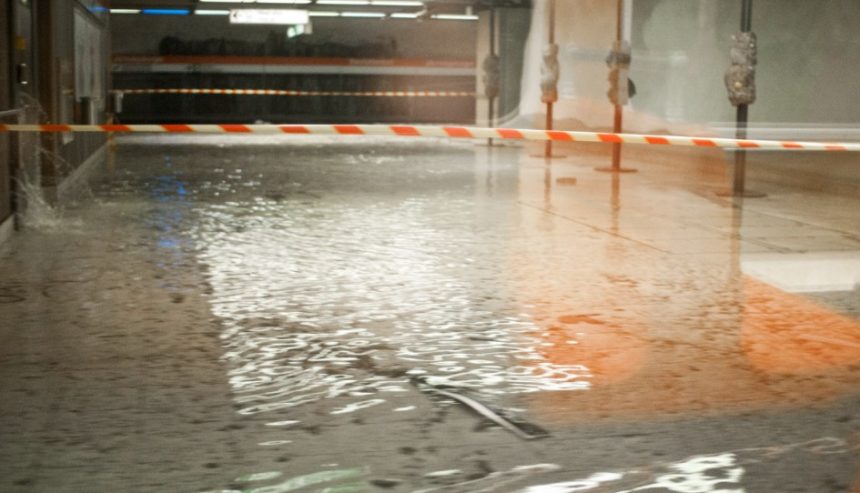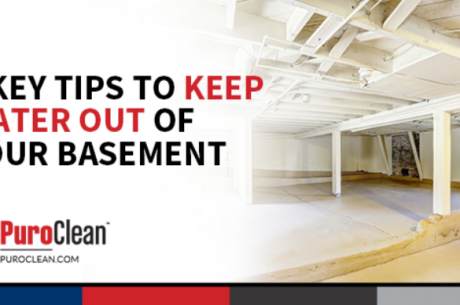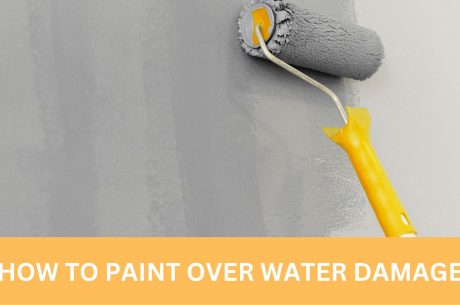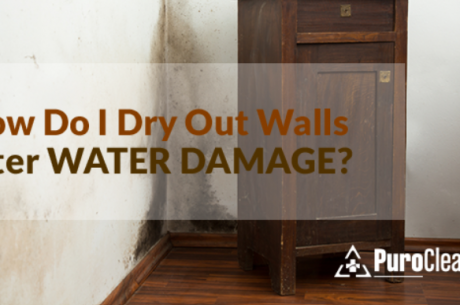Best Tips to Protect Your Home From Water Damage
Homeownership is a dream realized for many, offering a sense of security, comfort, and a space to create lasting memories. However, with the joy of owning a home comes the responsibility of its maintenance and protection. Water damage is a pervasive threat that can wreak havoc on your property, leading to structural issues, mold growth, and financial strain. The good news is that with proactive measures, you can significantly reduce the risk of water-related disasters.
We have previously share tips to repair water damaged walls and tips for Repairing Water Damage from a Roof Leak but this post will be dealing with prevention of damages.
In this guide, we will explore the 10 best ways to prevent water damage in your home, providing you with practical tips and expert advice to safeguard your sanctuary. Whether you’re a new homeowner or someone looking to enhance their property’s resilience, these preventative measures will help you create a watertight defense against the potential challenges that water damage poses. Let’s dive in and ensure that your home remains a haven of safety and serenity for years to come.
What You should know about Water Damage
Water damage refers to the harm caused to a structure or property due to the intrusion or presence of water in places where it shouldn’t be. This damage can result from various sources, including natural disasters, plumbing failures, appliance malfunctions, roof leaks, or flooding. Water damage can manifest in different forms, and its severity ranges from minor issues like dampness and staining to more severe problems such as structural damage and mold growth.
Common types of water damage include:
1. Flooding:
Inundation of water into areas where it can cause damage, often due to heavy rainfall, storm surges, or overflowing bodies of water.
Flooding occurs when water exceeds normal levels and inundates land or structures. This can be a result of various factors, including heavy rainfall, melting snow, storm surges from hurricanes or typhoons, or the overflow of rivers and other bodies of water. Floodwaters can cause extensive damage to buildings, infrastructure, and personal property, often leading to structural instability, mold growth, and the displacement of residents. Managing and mitigating flood damage typically involve evacuation procedures, construction of protective barriers, and long-term planning for flood-prone areas.
2. Leaking Roofs:
Damage caused by water penetrating through a damaged or poorly sealed roof, leading to ceiling stains, structural damage, and potential mold growth. It helps because this is one of the Best Ways to Prevent Water Damage.
Leaking roofs can result from various issues such as damaged shingles, deteriorating flashing, or improper installation. When rainwater infiltrates through these vulnerabilities, it can cause staining on ceilings, weaken structural components, and create an environment conducive to mold growth. Regular roof inspections, prompt repairs, and proper maintenance are crucial to prevent and address roof leaks effectively. Sealing gaps, replacing damaged materials, and ensuring adequate ventilation contribute to the overall resilience of the roof against water damage.
3. Burst Pipes:
Sudden pipe ruptures or leaks within the plumbing system, causing water to escape into the surrounding areas and potentially damaging walls, ceilings, and floors.
Burst pipes are often the result of freezing temperatures, corrosion, or high water pressure. The sudden release of water can lead to immediate and severe damage to the surrounding structures, including walls, ceilings, and floors. In addition to structural issues, burst pipes can also disrupt water supply, leading to inconvenience and potential water contamination. Rapid response to burst pipes involves shutting off the water supply, repairing or replacing the damaged pipes, and addressing any secondary damage caused by the water release.
4. Appliance Malfunctions:
Water damage can occur if household appliances such as washing machines, dishwashers, or water heaters malfunction and leak water into the surrounding spaces.
Malfunctions in household appliances that use water can result in leaks or flooding. Washing machines with damaged hoses, dishwashers with faulty seals, or water heaters with corrosion issues can all contribute to water damage. Regular maintenance, inspections, and timely replacement of worn-out parts are essential to prevent appliance-related water damage. Additionally, placing appliances on water-resistant flooring or using leak detection devices can help minimize the impact of potential leaks.
5. Plumbing Issues:
Faulty or deteriorating plumbing systems can lead to water damage, especially if issues like pipe corrosion, clogs, or joint failures occur.
Plumbing problems, such as aging pipes, corrosion, or clogs, can compromise the integrity of the water supply system. Leaks resulting from these issues can lead to water damage in walls, ceilings, and floors. Regular plumbing inspections, proactive maintenance, and timely repairs are essential to prevent water damage caused by plumbing failures. Upgrading plumbing systems to more durable materials and addressing issues promptly can significantly reduce the risk of water-related problems.
6. Condensation and Humidity:
Prolonged exposure to high humidity levels or condensation can cause water damage, leading to issues such as mold growth, wood rot, and deterioration of materials.
Condensation occurs when warm, moist air comes into contact with cooler surfaces, leading to the conversion of vapor into liquid water. High humidity levels can exacerbate this issue, causing water damage over time. Areas prone to condensation, such as poorly ventilated attics or basements, can experience problems like mold growth, wood rot, and damage to materials like drywall and insulation. Adequate ventilation, insulation, and moisture control measures are crucial to preventing condensation-related water damage.
7. Sewage Backup:
Contamination of water from sewer lines can result in severe water damage, posing health risks and requiring specialized cleanup procedures.
Sewage backup involves the intrusion of contaminated water from sewer or septic systems into living spaces. This type of water damage is particularly hazardous due to the presence of harmful microorganisms and chemicals. Sewage backup can lead to extensive damage to structures and belongings, posing significant health risks to occupants. Cleanup requires specialized equipment, protective gear, and thorough disinfection processes to ensure the removal of contaminants. Preventive measures include regular inspections of sewer lines, proper disposal of waste, and the installation of backwater valves to minimize the risk of sewage backup.
Best Ways to Prevent Water Damage in Your Home
1. Know Your Home’s Vulnerabilities
Burst pipes pose a substantial risk for water leaks, often resulting from issues such as clogs, corrosion, freezing temperatures, or high water pressure. Taking note of any significant changes in water pressure and addressing serious clogs promptly is crucial. Additionally, insulating pipes and letting faucets drip during freezing temperatures can prevent frozen pipes and the subsequent water damage.
2. Invest in Regular Roof Maintenance
Your roof plays a pivotal role in protecting your home from the elements. Annual inspections by a professional can help identify and rectify potential issues such as broken or missing shingles, damaged flashing, or compromised plumbing vents, preventing water damage from roof leaks.
3. Gutters and Downspouts: Your First Line of Defense
Regular gutter cleaning is essential, especially when coupled with roof inspections. Clean gutters not only protect your roof but also reduce moisture around windows and redirect water away from the foundation. Homeowners should schedule gutter cleanings at least twice a year, and those surrounded by trees may need more frequent maintenance.
4. Seal the Cracks: Windows and Doors
Weather stripping, caulking, and sealing gaps around windows and doors can prevent water infiltration. Ensuring storm windows are closed fully and addressing any issues with old windows can significantly reduce the risk of leaks, safeguarding your walls from potential water damage.
5. Basement Waterproofing Techniques
Implementing strategies like installing a sump pump and exterior waterproofing can prevent water from seeping into your basement, mitigating the risk of structural damage and mold growth.
6. Appliance Check: Preventing Leaks
Regular inspections of appliances such as washing machines, dishwashers, ice makers, and garbage disposals are essential. Periodic checks and timely replacement of supply hoses can prevent leaks. Placing your washing machine in a pan serves as a helpful backup measure, especially if it’s located on an upper floor. It helps because this is one of the Best Ways to Prevent Water Damage.
7. Service the HVAC System
Air conditioning systems generate condensation, making regular maintenance crucial. Keeping drip pans clean and ensuring drain lines are unobstructed can prevent leaks. Scheduling professional maintenance can also identify and address potential issues before they lead to water damage.
8. Consider French Drains
French drains, running along your home’s foundation, can help disperse and redirect water, particularly if you notice pooling close to your house. They are effective in controlling excess water inside basements and along perimeters. It helps because this is one of the Best Ways to Prevent Water Damage.
9. Have Backup Power for the Sump Pump
If you have a basement sump pump, having a backup power source is vital. Whole-home generators ensure operational sump pumps during power outages, reducing the risk of flooding. Some insurance providers may offer credits for installing these backup systems.
10. Know Where the Main Water Shutoff Valve Is
One of the Best Ways to Prevent Water Damage is to familiarize everyone in your home with the location of the main water shutoff valve. This knowledge enables quick action in the event of a leak, allowing you to shut off the water supply before calling for professional assistance. Locate appliance and fixture-specific valves as well to handle issues promptly.
11. Turn Off the Water When You Leave Town
If you plan to be away from home for an extended period, consider turning off the water supply entirely to minimize the risk of water damage. Alternatively, hire someone to check your home periodically if you choose to leave the water on.
12. Install Window Well Covers:
Window wells can be entry points for water during heavy rainfall. Installing window well covers helps keep rainwater, debris, and pests out, preventing potential water damage in basements. It helps because this is one of the Best Ways to Prevent Water Damage.
13. Upgrade to a Smart Thermostat:
Modern smart thermostats often come equipped with humidity sensors. Monitoring and controlling indoor humidity levels can help prevent condensation and dampness, reducing the risk of mold growth and water damage.
14. Inspect Exterior Walls:
Regularly inspect the exterior walls of your home for cracks, gaps, or deteriorating mortar. Addressing these issues promptly can prevent water infiltration and potential structural damage. It helps because this is one of the Best Ways to Prevent Water Damage.
15. Elevate Electrical Systems:
In flood-prone areas, consider elevating electrical systems, such as outlets and circuit breakers, above potential water levels. This can prevent short circuits and electrical fires in the event of flooding.
16. Install a Water Heater Pan:
Placing a water heater pan beneath your water heater can help contain leaks and prevent water damage. Ensure the pan is connected to a proper drainage system.
17. Monitor Water Bills for Unexplained Increases:
Sudden and unexplained increases in your water bills could indicate hidden leaks. Regularly monitor your water bills and investigate any significant spikes promptly to identify and address potential issues. It helps because this is one of the Best Ways to Prevent Water Damage.
18. Use Water-Resistant Building Materials:
When renovating or building, consider using water-resistant materials in vulnerable areas, such as bathrooms, kitchens, and basements. Water-resistant drywall and flooring can provide an additional layer of protection.
19. Install Flood Sensors:
Similar to leak detection systems, flood sensors can provide early warnings of potential flooding. These sensors can be placed in basements, crawl spaces, and other susceptible areas, sending alerts when water levels rise unexpectedly. It helps because this is one of the Best Ways to Prevent Water Damage.
20. Inspect and Maintain Outdoor Sprinkler Systems:
Ensure that your outdoor sprinkler system is well-maintained and functioning correctly. Leaks or malfunctions in these systems can lead to excessive water accumulation around your home’s foundation.
21. Prune Trees and Bushes:
Overgrown vegetation close to your home can contribute to water damage. Regularly prune trees and bushes to prevent them from touching or overhanging your roof, siding, or windows.
22. Educate Family Members on Water Safety:
Ensure everyone in your household is aware of water safety practices. Teach them how to shut off the main water supply in case of emergencies and encourage responsible water usage. It helps because this is one of the Best Ways to Prevent Water Damage.
23. Invest in Flood Barriers or Sandbags:
If you live in an area prone to flooding, having flood barriers or sandbags on hand can be a proactive measure. These can help redirect water away from your home and protect against rising floodwaters.
Conclusion
In trying to Prevent Water Damage, it’s evident that a proactive approach and a comprehensive understanding of potential risks are essential. The 10 best ways to prevent water damage discussed in this guide provide a robust foundation for homeowners to fortify their properties and ensure a secure living environment.
From addressing common culprits like leaking roofs and burst pipes to implementing preventive measures such as installing leak detection systems and maintaining a vigilant eye on potential vulnerabilities, each strategy contributes to the overall resilience of your home. Regular inspections, timely repairs, and a commitment to proactive maintenance form the pillars of a watertight defense.
Water damage, whether from flooding, appliance malfunctions, or plumbing issues, can have far-reaching consequences, affecting not only the structural integrity of your home but also the well-being of its occupants. The potential for mold growth, compromised indoor air quality, and financial strain underscores the importance of taking preventive actions seriously.
Furthermore, understanding the nuances of insurance coverage, liability for damages in shared living spaces, and the necessity of quick and efficient response to incidents like burst pipes or ceiling leaks is paramount. Knowledge empowers homeowners to navigate these challenges with confidence and ensure a swift recovery when faced with unexpected water-related emergencies.
Your home, a sanctuary of comfort and security, deserves the utmost care and attention. Through diligence and a proactive mindset, you can ensure that it remains a haven for you and your loved ones for years to come.
Frequently Asked Questions on Water Damage
Is water damage easy to fix?
Water damage can range from minor issues that may be relatively easy to fix, such as a small leak, to more severe damage that requires extensive repairs. The ease of fixing water damage depends on the extent of the damage and how quickly it is addressed. Prompt action is crucial to prevent further complications. Quickly contact PuroClean of Bulls Heads on +1 347-501-6155 to help you.
Can water damage cause mold?
Yes, water damage can lead to mold growth. Mold thrives in damp and humid conditions, making areas affected by water damage susceptible to mold infestation. It’s essential to address water damage promptly to mitigate the risk of mold development, as mold can pose health risks and further damage to the structure.
Is water damage dangerous?
Water damage can be dangerous, especially if not addressed promptly. It can weaken the structural integrity of a building, create an environment conducive to mold growth, and pose electrical hazards. Additionally, prolonged exposure to water-damaged areas can have adverse health effects. It is crucial to prioritize the mitigation of water damage to ensure the safety of occupants and the property.
What water damage is covered by insurance?
The coverage for water damage varies depending on the type of insurance policy. Typically, standard homeowners’ insurance covers sudden and accidental water damage, such as burst pipes or a sudden appliance malfunction. However, gradual damage or damage resulting from a lack of maintenance may not be covered. It’s important to review your insurance policy and discuss specific coverage with your insurance provider.
Who is liable for water damage from the flat above?
Liability for water damage from the flat above often depends on the cause of the damage. If the damage is a result of the negligence or actions of the occupant in the flat above, they may be held liable. However, determining liability can be complex, and legal considerations may come into play. It’s advisable to consult with legal professionals to understand the specific circumstances and responsibilities.
Who is responsible for water damage in a condo?
In a condominium, responsibility for water damage may be outlined in the condominium association’s governing documents. Generally, common areas and the building’s structure are the responsibility of the condo association, while individual unit owners are responsible for damages within their units. However, this can vary, and it’s essential to refer to the specific terms outlined in the condominium association agreement.
Who to call for water damage in the ceiling or wall?
If you discover water damage in the ceiling or wall, it’s crucial to act quickly. Begin by turning off the water source if possible and then contact a professional water damage restoration service. These professionals have the expertise and equipment to assess the extent of the damage, extract water, and implement drying and restoration processes. Additionally, contacting your insurance provider to report the incident is an important step in the mitigation process.
Can water damage be fixed in house?
You should contact a water damage restoration company like PuroClean of Bulls Heads on +1 347-501-6155 to help you clean and repair your home properly. Professional companies have the experience necessary to fix the water damage issue and look for mold and other hazardous issues.



